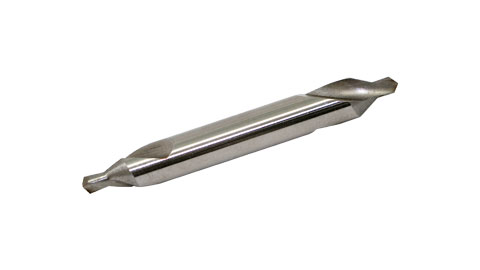jkstill
New Reader
11/30/18 3:48 p.m.
Nice article, thank you.
Another similar method that I have found that works:
Cut the heads off appropriately sized bolts, and grind the resulting end to a point.
Insert the bolts, then line up the workpiece and give it a good tap with a deadblow hammer.
The bolts will leave a nice dimple for drilling points.
When alignment is more critical, drill the first hole, and get a bolt through it, making it easier to line up the piece correctly, then tap it with the hammer.
Torqued
New Reader
11/30/18 4:19 p.m.
When transferring dimensions from the dividers to a rule such as a carpenter’s square, you can increase your accuracy a little by starting with the dividers at the one inch mark instead of at the edge of the square, then just subtract the inch for your spacing calculations. I find it easier to place the divider precisely in this way, especially if the rule is well used and maybe has the edge dinged up a little.
Harbor Freight 6 in dig calipers, $10-20, have sharp points and can be used to scribe as a divider would; saves measuring and errors in doing so. as shown, the dividers are 1 13/16 apart.

Brotus7
HalfDork
12/1/18 10:13 a.m.
BimmerMaven said:
Harbor Freight 6 in dig calipers, $10-20, have sharp points and can be used to scribe as a divider would; saves measuring and errors in doing so. as shown, the dividers are 1 13/16 apart.
Agreed. Have a pair of cheap calipers that double as scribes. You can color the metal in the approximate area of interest with a sharpie marker before scribing to help it show up (or marking fluid/dykem).

Good tip
Now how do you keep the drill bit from walking or otherwise being not center? Center punching helps but on some of the larger holes I find the drill bits don’t move symmetrically about the center through the material, even after drilling a pilot hole. I hope that makes sense…

In reply to spandak :
A pilot hole that’s at least at wide as the web thickness of the final drill bit should keep the drill from wandering. If the drill still goes in off-center, I’d guess that something is wrong with the drill (i.e. ground asymetrically).

Good short article with terrific clear photos! I could use more detail on Step 9, “sanding” the corners round. Does that just mean taking the part to the bench grinder and grinding the corners down to the scribed radius line?

I like to use center drill bits when making pilot holes. They’re pretty short and stout, so they don’t flex much and tend to follow the center punch pretty well.


Thanks for the kind words.
Brotus: I use the center drill bits all the time. They don’t flex at all. They just break if you go too hard on them. That’s how I made the part, but we left the drilling out of the story to keep it short. Machinists often disapprove of the use, but they work so well
Danny: I usually sand on a combo 6″ disk/belt sander You’ll see it in a lot of the stories I write. An electric 4″ hand held grinder works pretty well too if you clamp the part down.

Another trick: keep in mind where/when your car was made. If the car was made in a place or time where they were likely using metric, then it can be useful to convert your measurements (especially if they’re a somewhat oddball fraction) to metric.
For example, that measurement you just took on your Honda probably isn’t 1-11/64″, it’s 30mm. For bolt patterns and things like that you can assume that you’re mostly going to be using pretty round whole numbers.
















